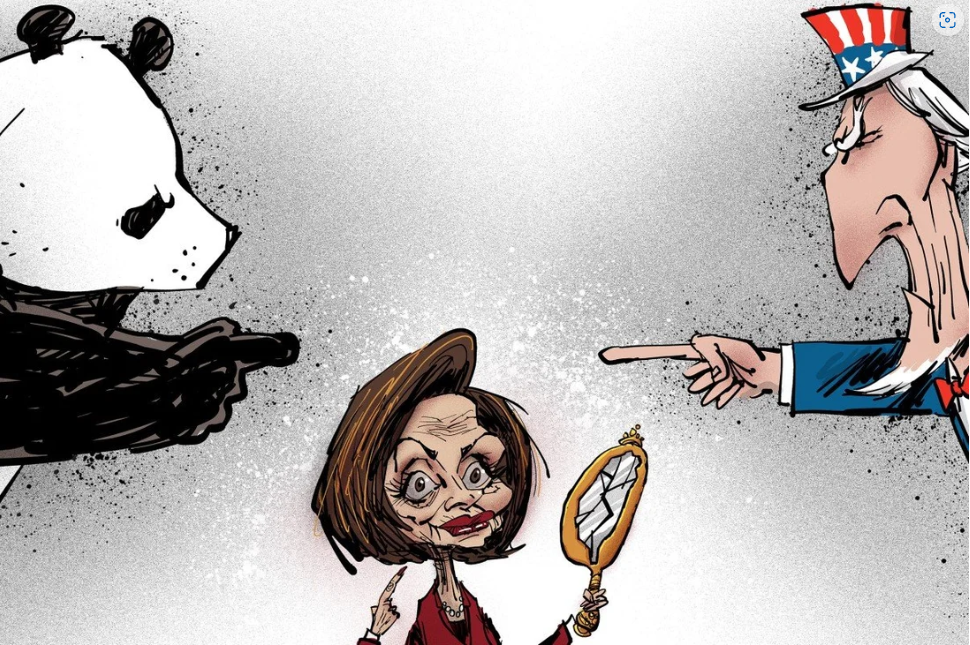Senior Colonel Zhou Bo (ret) is a senior fellow of the Centre for International Security and Strategy at Tsinghua University and a China Forum expert

History is not always written by victors. It is equally written by losers. US House Speaker Nancy Pelosi’s visit to Taiwan is a typical example of how a self-centred egoist has gone out for wool and come home shorn.
Pelosi, one of the US’ highest-ranking legislators and second in line to the presidency, has gained little more than some limelight before her retirement. Her Taiwan visit was widely considered unnecessarily provocative. Even The Washington Post, which published her op-ed explaining why she would make the trip, published an editorial that can hardly be misunderstood: “The damage from Pelosi’s unwise Taiwan visit must be contained”.
Beijing’s response was carefully calibrated yet exceptionally strong. It didn’t attempt to obstruct Pelosi’s flight, as some had speculated, but in the wake of her arrival in Taipei on August 2, Beijing announced that it would conduct air and sea drills in six areas around the island that would effectively seal off Taiwan for three consecutive days.
Two target zones were placed inside Taiwan’s “territorial waters” and dozens of fighter planes were flown across the median line in the Taiwan Strait, as a show of disregard for that boundary. For the first time, missiles were fired over the island.
With these measures, the People’s Liberation Army has proven it could coordinate operations to impose a full blockade should it ever choose to. It has progressed from the much smaller missile firing exercises conducted during the 1995-1996 Taiwan Strait crisis. Those exercises were meant to send a warning to then Taiwanese president Lee Teng-hui after his visit to the US.
But, unlike in 1996 when one American aircraft carrier sailed through the strait and another manoeuvred close by, this time, the USS Ronald Reagan cautiously kept away from the entrance to the Taiwan Strait.
How might the Biden administration reflect on all this? China and the US have been pointing fingers at each other for changing the status quo in the Taiwan Strait. This time, Pelosi has changed the status quo, ironically, in China’s favour.
This is very much like the situation in 2012 when the Japanese government announced that it was going to nationalise the Diaoyu Islands – known in Japan as the Senkakus – which China claims as part of its territory. A furious Chinese government sent vessels into the archipelago’s contiguous zone. Today, Chinese coastguard ships sail regularly there, despite Japan’s protests, to demonstrate Beijing’s sovereign claim.
Whether such exercises around Taiwan become more common in the future depends on Taipei and Washington, not Beijing. Taiwan’s authorities, led by the separatist Tsai Ing-wen, can hardly have a real change of heart, even as the cost of their opposition to reunification with the mainland continues to grow.
The real question is how this unprecedented move by the mainland might change the mentality of the Taiwanese people, especially in their next election. China still has strategic patience. After all, it is in Beijing’s interests to achieve peaceful reunification with Taiwan. But China’s patience is not infinite. According to its Anti-Secession Law, it may resort to non-peaceful means to achieve reunification if it concludes that all possibilities for peaceful reunification have been completely exhausted.
For peace to prevail in the Taiwan Strait, then, the key is to let China believe peaceful reunification is still possible. Over the years, both Beijing and Washington have maintained a policy of strategic ambiguity, albeit for different reasons. China talked about its “red line”, but lacked the military capability to enforce it. Now, thanks to the unremitting efforts of the PLA to build its strength, Beijing has been able to show for the first time that it has not only the will but the capability to protect its core interests.
Today, America’s strategic ambiguity – not clarifying explicitly if it would come to Taiwan’s defence if the island was attacked – looks more like a fig leaf to hide the reality that it might lose in a direct confrontation with the PLA in the strait, where China has all the advantages of fighting on its home turf.
Neither China nor the US wants a war, but there is no guarantee they can avoid one. For China, America’s one-China policy is already hollowed out. Although the two countries have a few confidence-building mechanisms, they are essentially a litany of technical rules aiming to avoid an accident, say, in the South China Sea.
The problem is, a clash between Chinese and US militaries in the Taiwan Strait can hardly be accidental. The Biden administration has talked about the need to establish “guardrails”, but if China concludes that such guardrails are America’s way of preventing its use of force as a last resort for reunification, they won’t be established in the first place.
On August 5, China’s Foreign Ministry made clear its displeasure at the US with a series of measures ranging from the cancellation of all defence consultations to the suspension of climate change talks. This second-wave response shows that, for Beijing, everything can come to a stop for the Taiwan issue.
Looking down the road, we will probably see a chain reaction: the United States will speed up arms sales and expand training and personnel exchanges to turn Taiwan into a “porcupine”; a more confident and capable China will then respond more forcefully. As a result, Taiwan’s room to manoeuvre will shrink further. It is hard to tell where the endgame is, but two things are sure: Taiwan cannot move away and time is on the side of mainland China.
(This article was first published on South China Morning Post on Aug. 11, 2022.)
